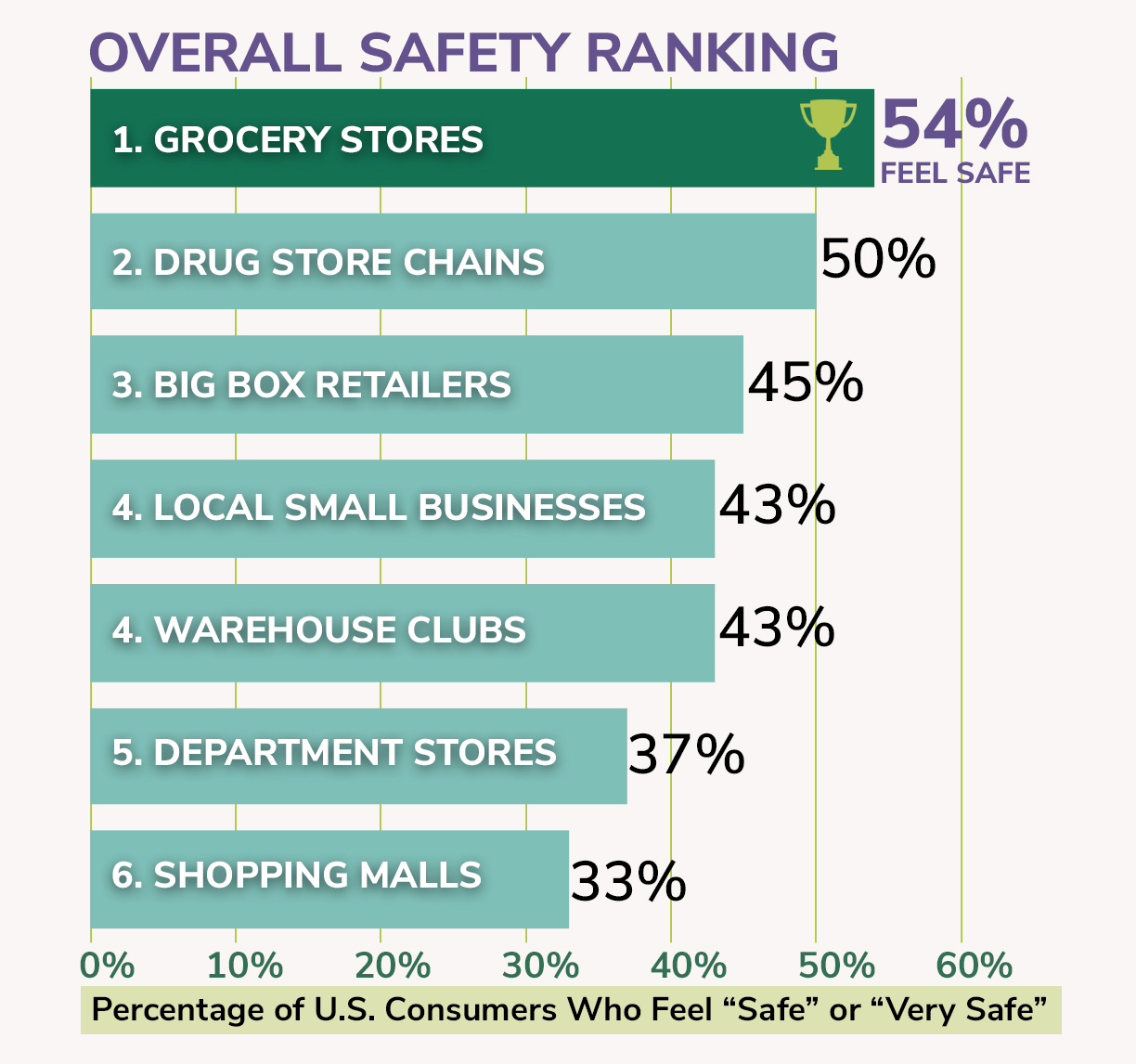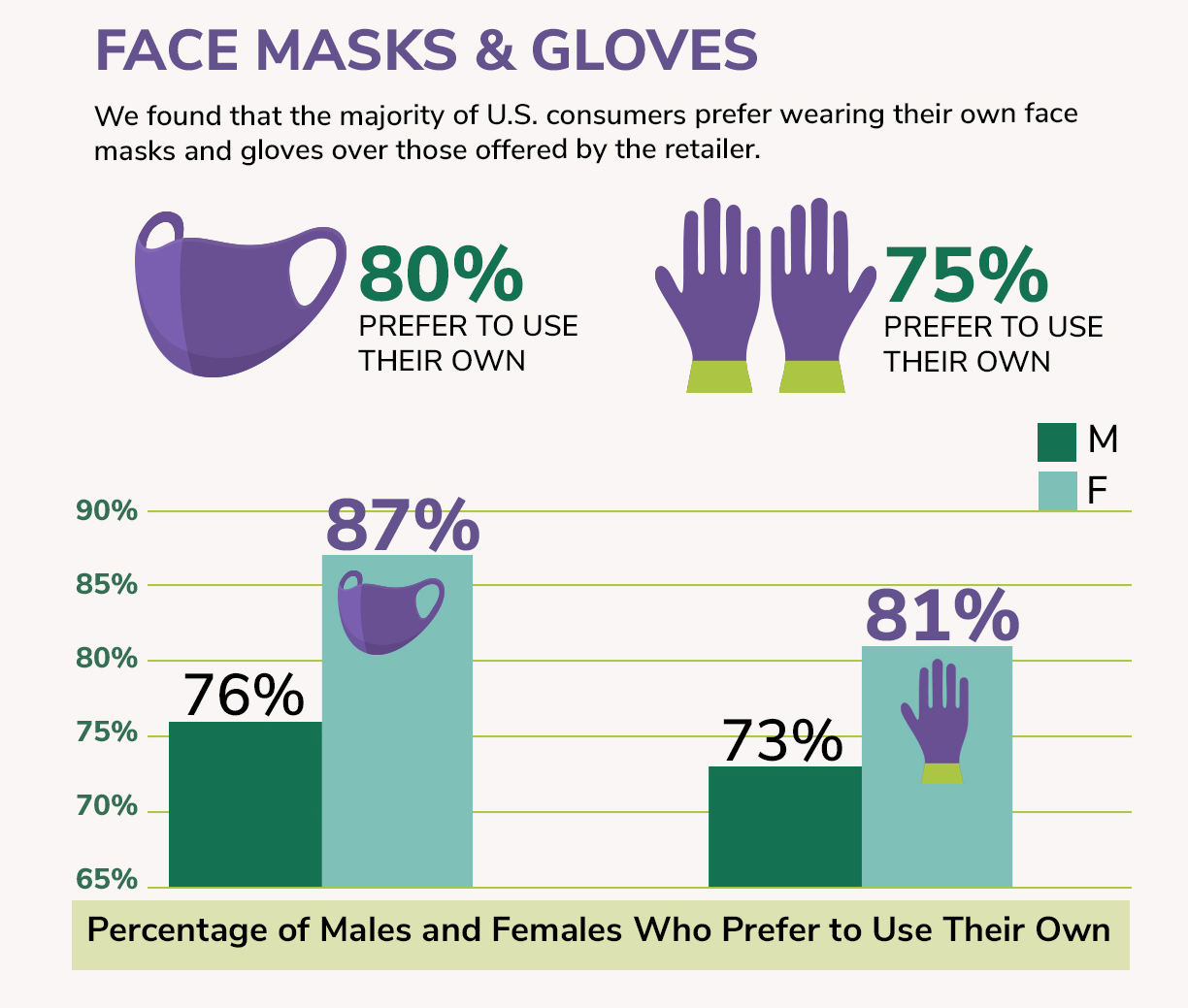When visiting stores during the coronavirus pandemic, shoppers feel safer in supermarkets than in other retail venues, according to a survey by digital marketing firm First Insight.
Of more than 500 U.S. consumers polled on April 20, 54% said they feel “safe” or “very safe” from COVID-19 when shopping in grocery stores, followed by 50% for chain drugstores, Pittsburgh-based First Insight said Friday.

Forty-five percent of consumers, meanwhile, said they feel safe shopping at big-box retailers, compared with 43% for warehouse clubs and local merchants and 37% for department stores. Malls ranked lowest in the survey, as only 33% of respondents said they would feel safe shopping in these venues.
“As retailers and brands grapple with big questions related to reopening stores, it’s clear from our findings that consumers have varying degrees of comfort within different store environments and formats,” according to Greg Petro, CEO of First Insight, which provides a customer-driven digital product testing platform for brands and retailers.
Men feel much safer than women shopping at stores during the pandemic. For example, 58% of men feel safe shopping at a grocery store, compared with 49% of women. Men also feel safer than women at chain drugstores (54% versus 48%), big-box stores (48% vs. 43%) and local retailers (47% vs. 39%).

Malls showed biggest disparity by gender, with 41% of men saying they feel safe shopping there compared with 24% of women. Men also felt safer from the virus than women shopping at department stores (43% vs. 31%) and warehouse clubs (49% vs. 38%).
When it comes to protecting themselves from COVID-19, 80% of respondents prefer to use their own face masks and 70% prefer to use their own gloves rather than those provided by the retailer when shopping in a store, First Insight found.

“As retail visits expand past essential retail like grocery and drugstores, other retailers — and malls, in particular — need to be thinking of ways to inspire a sense of safety for consumers, and it will need to go beyond offering gloves and masks at the door,” Metro noted. “It’s also likely that retailers will see more men in-store than women, and they should consider adjusting inventory to target these shoppers.”
First Insight’s latest findings are part of its “Impact of Coronavirus on Consumer Purchase Decisions and Behaviors” series of shopper sentiment studies during the pandemic. The company has been tracking consumer data since Feb. 28 and fielded additional studies on March 17, April 3 and April 20.
Among key findings, concern about coronavirus has declined for the first time since the February poll. Eighty-two percent of respondents expressed worry about COVID-19 on April 20, down from 87% on April 3.
Coronavirus’ effect on consumer purchasing decisions also has lessened. In the April 20 survey, 80% of respondents said the virus has impacted their buying decisions somewhat or significantly versus 89% in the April 3 poll. Likewise, the percentage of consumers cutting back spending due to COVID-19 has leveled out, with 62% of shoppers reporting they tightened spending in both the April 20 and April 3 surveys.
In the April 3 study, First Insight found that 60% of consumers polled thought that stores should reopen by the end of May, while 32% believed reopenings should occur by the end of April or beginning of May.
For our most up-to-date coverage, visit the coronavirus homepage.





